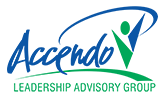
A Simple Development Framework to Help Accelerate Your Career
Who is responsible for your development as a leader? If you answered, my company or my boss, you’re only partially right. Of course, your employer should play a key role, but their ability to be effective on your behalf really depends on their development philosophy and willingness and/or ability to invest in your improvement. If you aspire to progress as a leader the buck stops with you. There’s no better time than now to take control of your own learning and growth. Here’s a simple five-step process to help you create your own career development plan. You know what they say, “a goal without a plan is just a wish,” so let’s get started.
- Short-Term Goal: Consider where you want to be in 1-to-2 years. What role do you want? Maybe it’s an expansion of your current role, a new role or a promotion. What level of responsibility is the role? What skills are required?
- Long-Term Goal: Think about what you want to be doing in 3-to-5 years. This might be very specific, like “I want to be President of the company”, or maybe it’s simply a description of the function or type of work you want to be doing. Be bold. What does that look like? Is there a path to leadership within your current employer, or will you need to move on in order to move up? What leadership attributes will be important for your success?
- Strength and Opportunity: Determine a strength you want to leverage and an area of opportunity that you need to improve. If you’re not quite sure what to focus on here, get feedback from others who know you well. I always tell clients that feedback is the currency for successful leadership development. You can never get enough of it (see step 5), as long as you listen, take it to heart and act upon the input.
- Action Plan: For both your strength and area of improvement, write down 1-3 steps you can take in the next year to make progress in each area. Commit to when you will complete each step and how you will know you’ve met the objective.
- Stakeholders: Identify a small group of stakeholders and share your plan with them. This might be your boss, current or former co-workers, members of your team, and/or friends. The important thing here is that each person be invested in your success and in a position to observe your behavior on a regular basis. Ask them for input into your plan and to hold you accountable for what you’ve committed to doing. Most importantly, ask if you can check in with them periodically to get feedback and suggestions.
Now that you’ve completed your development plan, it’s important to remember that it’s a living, breathing document; meaning … it’s never final. It’s an ongoing process. As you grow and evolve, so will your plan. Keep it out and visible so that it remains top of mind. Review it regularly to ensure that you’re tracking against your action plan. Update it at least annually and be sure to share the most current version with your boss. If you can control it, separate your development discussion from your performance review, so that you can focus on career aspirations and the future. Don’t stop there, ask your manager if you can discuss your plan two levels up with your boss’ boss. This will give you invaluable exposure and perspective, and signal to the influential leadership above you that you mean business.
Here’s a promise – if you’re disciplined and intentional with this simple, 5-step process you will find yourself right where you want to be – in the driver’s seat of your own leadership success.
